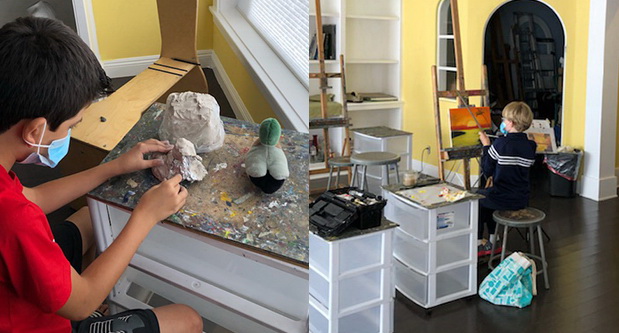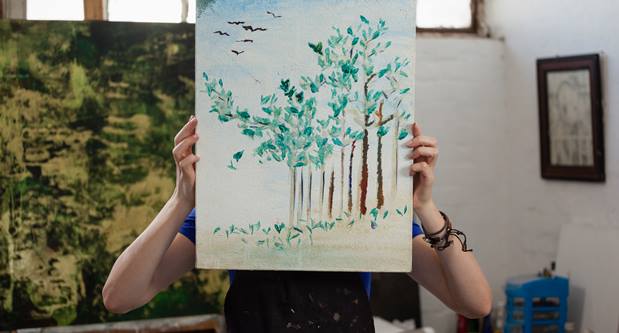
According to The Canadian Mental Health Association, nearly half of the global population gets to experience mental health issues by the age of 40.
Knowing this, it is no surprise that more and more people turn to art with the hope of feeling better with themselves and in general.
It’s not the first time I talked about the numerous benefits that art can bring to our brain’s health.
However, for those who still feel a little skeptical about whether or not to invest their time in an artistic hobby, I thought the scientific evidence would help decide.
Making and enjoying art will not be the universal solution for your mental and psychological struggles. However, enough studies highlight the positive results of art on our psyche and our overall well-being; that is why I think we should prioritize creativity in our sometimes stressful lives.

Have you ever wondered why your dentist plays relaxing music during your appointment? Or why you might see paintings hung on some of the hospitals’ walls?
Well, the answer is quite simple: art reduces your cortisol level and helps you calm down and relax.
An increasing number of doctors started to even prescribe artistic activities and museum visits for their patients, which helps by reducing the level of the stress hormone and creating a stronger bond with the community participating in these activities.
A 2016 study by Girija Kaimal, Kendra Ray, and Juan Muniz makes sure to mention that the stress-reducing effect of making art doesn’t depend on variables such as the age of the respondents, the moment of the day when art pieces are created, or the progress one makes with their artistic skills.
In other words, as we always say in our art classes, anyone can rip the benefits of making art no matter their age and skills.

Art’s benefits on the brain deserve to be studied separately, so a new research field emerged not long ago: neuroesthetics.
Because of the advances in the cognitive, biological, and neurological fields of science, we can explore new forms of evidence on the brain and arts.
For example, in a 2019 study, researchers utilized biofeedback to observe the effects of visual arts on neural circuits. Other way put, biological evidence can be found on the process through which visual arts promote wellness, mental health, and improvement of the ability to adapt to stressful situations.
Besides biofeedback, brain wave technology and brain imaging support researchers in gathering physical, scientific proof that making and enjoying art engage our brains in new ways.

Mindfulness and flow, two mental states you probably heard of from your therapist, meditation group, and, well, from everywhere on the media, are scientifically proven to play a big part in our everyday psychological health.
There is a good reason why mindfulness and flow are such popular tools for well-being, but did you know making art can equip you with these?
When you are mindful, you are aware of the thoughts that float through your mind like the clouds over a summer day sky.
In that state of awareness, you are not judgmental towards what crosses your mind. You are in the present moment and maybe a little more kind to yourself.
The state of flow refers to how you completely forget about time and fully engage in what you are creating/doing. It is neurochemically rewarding and makes activities feel so easy and smooth. It is also inspiring and motivating.
Making art on a regular basis trains our ability to be aware of these two states and shift in and out.

Since the therapeutic effects of art in our lives are backed up by science, art therapy is becoming more and more appreciated by those who want to learn how to deal with mental health issues such as:
There are various methods used in art therapy that anyone can try for sustaining their well-being in a non-therapeutically context: